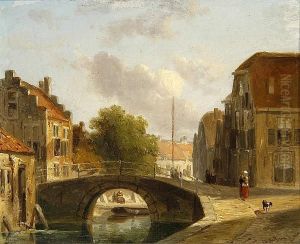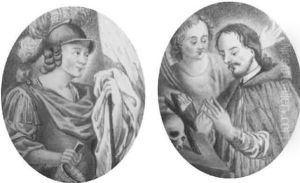Adalbert Beer Paintings
Adalbert Beer was a German painter known for his religious-themed works and his contributions to church decoration during the 19th century. Born on March 19, 1845, in Nuremberg, Germany, Beer demonstrated an early aptitude for art. His initial education and training were in his hometown, where he absorbed the influences of the German Romantic and Nazarene movements, both of which left a lasting impact on his stylistic development.
Beer's work was characterized by its detailed execution and often featured religious subjects, aligning with the Nazarene focus on spirituality and the revival of medieval and early Renaissance artistic styles. This was a movement that sought to counteract what its adherents saw as the corrupting influence of the Academy and to return to what they considered the pure, spiritual values found in the art of the late Middle Ages and early Renaissance.
In 1866, Beer enrolled at the Academy of Fine Arts Munich, which was one of the most prestigious art institutions in Germany at the time. There, he studied under influential artists and educators who helped to refine his skills and artistic vision. Munich was a hub for artists who shared Beer's passion for religious art, and it provided a stimulating environment for his development as a painter.
Throughout his career, Beer worked on several church commissions, which were a testament to his reputation as an artist capable of handling large-scale and spiritually significant projects. His work in this domain contributed to the broader 19th-century movement of church art renewal in Germany, which aimed to imbue new church constructions with a sense of historical continuity and spiritual depth.
Sadly, Adalbert Beer's life and career were cut short when he died on September 18, 1888, at the age of 43. Despite his relatively brief career, his work remains a part of the legacy of 19th-century German religious art. His paintings, though not widely known today, are still appreciated for their craftsmanship and devotional character, and they continue to adorn the walls of the churches for which they were created.

